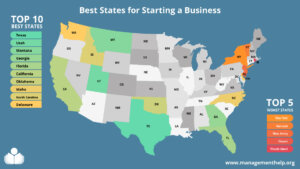Remote hiring has quickly become a standard practice in today’s evolving workforce, driven by technological advances and shifting workplace preferences. More companies are embracing remote employees to tap into a wider talent pool, reduce overhead costs, and boost productivity.
As flexibility and work-life balance become more important, hiring remotely is no longer just a trend. It’s a competitive advantage. Building a remote team offers increased agility, access to diverse skill sets, and scalability for growing businesses.
Define Your Remote Hiring Needs
Before you begin the hiring process, it’s essential to clearly define what you’re looking for in a remote employee. This step lays the foundation for an efficient and targeted recruitment strategy.
1. Identify Roles Suitable for Remote Work
Not every role is ideal for remote execution. Focus on positions that rely heavily on digital tools and don’t require constant in-person collaboration, such as software development, customer support, marketing, or content creation.
2. Outline Job Responsibilities and Required Skills
Create a detailed list of daily tasks, performance expectations, and the technical or soft skills needed to succeed. This clarity will help attract qualified candidates and streamline your interview process.
3. Set Clear Expectations for Availability and Time Zones
Specify working hours, preferred time zones, and whether flexibility is allowed. Remote teams often span across regions, so defining when employees need to be available for meetings or collaboration is crucial for productivity and communication.
Craft a Compelling Remote Job Description
A well-crafted remote job description is key to attracting the right talent. Start with an optimized job title that clearly reflects the role and includes terms candidates are searching for, such as “Remote Software Developer” or “Work-from-Home Customer Support Specialist.” Use keywords naturally throughout the job listing to improve visibility on job boards and search engines.
Remember to highlight your company’s remote-friendly perks, such as flexible hours, home office stipends, or virtual team events. These benefits help your listing stand out in a competitive market. Set clear expectations about the collaboration tools (like Slack, Zoom, or Trello) and your team’s communication styles, so applicants know what to expect in your remote work environment.
Choose the Right Hiring Platforms
Finding the right talent starts with posting your job in the right places. For remote hiring, dedicated job boards like We Work Remotely, Remote OK, and FlexJobs attract candidates specifically looking for remote opportunities. These platforms allow you to target applicants who are already accustomed to, or seeking- remote work’s flexibility.
For short-term or project-based roles, consider freelance platforms like Upwork, Toptal, or Fiverr, which are ideal for sourcing specialized skills quickly. An Applicant Tracking System (ATS) can streamline your hiring process by organizing applications, tracking candidate progress, and helping you filter top talent efficiently.
Screen and Interview Remote Candidates
Hiring remote employees requires a slightly different approach than traditional hiring, especially regarding screening and interviewing. Start with pre-screening strategies like reviewing resumes for remote work experience, assessing written communication in email exchanges, and using short skills assessments to filter qualified candidates. These steps help ensure you’re only moving forward with applicants comfortable with remote work dynamics.
When it’s time to conduct video interviews, focus on creating a seamless virtual experience. Test your video conferencing tools in advance, and ensure the candidate has a quiet, professional environment. Pay attention not only to what they say but also how they communicate, remote work demands clear, proactive communication.
Ask questions that reveal remote-specific skills and traits. For example: “How do you stay productive while working from home?” or “Tell me about a time you resolved a problem independently without direct supervision.” These questions help you gauge whether a candidate can thrive in a remote setting with minimal oversight.
Evaluate Remote-Specific Skills
When hiring remote employees, it’s essential to evaluate skills that go beyond technical expertise. Remote workers need to be self-motivated, proactive, and capable of managing their time without constant supervision. Strong communication is also key, as they’ll rely heavily on written and verbal interaction through digital channels.
To assess these traits, consider using remote-specific assessments and personality tests that measure adaptability, focus, and collaboration style. Ask for references who can speak to the candidate’s experience working remotely. This helps verify their ability to thrive in a virtual work environment and maintain productivity from a distance.
Set Up Contracts and Legal Compliance
Setting up proper contracts and ensuring legal compliance is a crucial step you can’t afford to overlook when hiring remote employees. Start by understanding employment laws in your home country and your employee’s location, especially if you’re hiring internationally. These regulations can vary widely, impacting everything from termination policies to mandatory benefits.
Draft a clear employment contract that outlines job duties, work hours, pay, confidentiality, and termination terms. This protects both parties and avoids future misunderstandings. You’ll also need to consider tax and payroll obligations.
Some countries require you to register as a foreign employer, while others may need you to partner with an Employer of Record (EOR). Staying compliant helps avoid fines, legal issues, and reputational damage.
Onboard Remote Employees Successfully
A smooth onboarding process is essential for setting up remote employees for success from day one. Start with a structured virtual onboarding plan that includes a clear schedule, welcome calls, and introductions to team members. Ensure new hires have timely access to all the tools, systems, and resources they need, including email, project management platforms, and internal documentation.
Offer step-by-step training through video tutorials, live sessions, or mentorship programs to help them understand their role and workflows. Equally important is introducing your company culture remotely, sharing your mission, values, and communication style. Encourage informal chats and virtual team-building activities to create connection and engagement.
Tools and Software for Managing Remote Teams
Effectively managing a remote team requires the right tools to keep communication clear, projects on track, and measurable productivity. Communication platforms like Slack, Microsoft Teams, or Zoom are essential for maintaining consistent contact and fostering team collaboration. These tools allow real-time messaging, video calls, and file sharing, helping remote teams stay connected despite the distance.
For project management, platforms such as Trello, Asana, ClickUp, or Monday.com help teams stay organized, assign tasks, set deadlines, and track progress visually. They streamline workflows and ensure everyone knows their responsibilities.
Finally, time tracking and productivity tools like Toggl, Time Doctor, or Hubstaff can help monitor hours worked and offer insights into how time is being spent. These tools are especially useful for managing freelancers or global teams across different time zones. These software solutions create a solid foundation for smooth and efficient remote team management.
Tips for Long-Term Remote Team Success
Building a successful remote team goes beyond hiring, it requires ongoing effort to maintain engagement, productivity, and trust. One of the most effective ways to align your remote employees is through regular check-ins and feedback loops. Weekly one-on-ones or team stand-ups can foster transparency, clarify expectations, and help address challenges before they escalate.
Creating a strong remote work culture is equally important. Celebrate wins, encourage virtual team-building activities, and reinforce your company values in every interaction. A positive culture boosts morale and helps remote employees feel connected despite physical distance.
Don’t overlook mental health and work-life balance. Offer flexible hours, promote digital wellness, and create an environment where employees feel safe discussing burnout or personal challenges. Long-term success stems from a team that feels supported both professionally and personally.
FAQs About Hiring Remote Employees
Hiring remote employees involves unique considerations. Below are answers to some of employers’ most common questions about building a virtual team.
Conclusion
Hiring remote employees offers businesses flexibility, access to a global talent pool, and cost savings, benefits that are hard to ignore in today’s evolving work environment. You can confidently streamline the remote hiring process by clearly defining your needs, crafting detailed job descriptions, and using the right platforms and tools.
Screening for remote-specific skills and providing strong onboarding ensures long-term success. As the future of work continues to shift, companies that embrace remote hiring are better positioned for growth and adaptability. Now is the perfect time to start building your remote dream team and stay ahead in the modern workforce.
 Sections of this topic
Sections of this topic
















